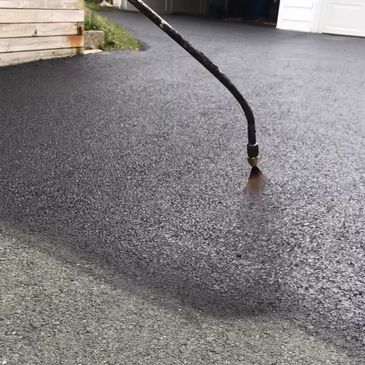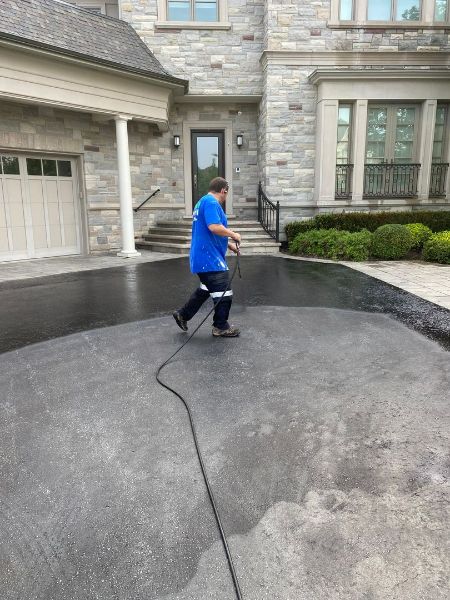Hot Mix Asphalt: A Sustainable Service for Sidewalk
Hot Mix Asphalt (HMA) has emerged as a leading sustainable choice for sidewalk options, using a myriad of ingenious technologies and ecological advantages. Its capacity to decrease and recycle materials power intake provides an engaging instance for its adoption in roadway construction tasks. The long-lasting efficiency and longevity of HMA make it a favored choice for facilities growth. As the need for green construction techniques grows, checking out the subtleties of HMA's sustainability can offer beneficial understandings into the future of pavement options.
Ecological Advantages of Warm Mix Asphalt

Furthermore, Hot Mix Asphalt aids to reduce metropolitan heat island results. Its dark color takes in sunshine, minimizing the amount of heat reflected back into the ambience compared to lighter-colored pavements. This can decrease ambient temperatures in metropolitan locations, reducing the need for cooling and eventually reducing energy usage.
Additionally, Hot Mix Asphalt contributes to enhanced stormwater monitoring. Its porous nature allows water to recharge and infiltrate the sidewalk groundwater materials, lowering drainage and the risk of flooding. These environmental advantages make Hot Mix Asphalt a sustainable choice for paving highways and roads.
Energy Effectiveness in HMA Production
Is energy performance a critical variable in the manufacturing of Hot Mix Asphalt (HMA)? Power plays a considerable role in the manufacturing of HMA, affecting both cost and environmental sustainability. One crucial aspect of power effectiveness in HMA production is the usage of cozy mix asphalt (WMA) modern technologies.
Additionally, advancements in plant modern technologies have led to even more energy-efficient HMA production procedures. Modern plants are developed with attributes like recycled asphalt pavement (RAP) processing capabilities, efficient heater systems, and enhanced insulation, all adding to power savings. By maximizing power usage in HMA manufacturing, the sector can decrease its carbon footprint while maintaining top quality sidewalk materials. Power effectiveness is, therefore, a crucial factor to consider in ensuring the sustainability of Hot Mix Asphalt production.
Recyclability of Hot Mix Asphalt
The recyclability of Hot Mix Asphalt (HMA) is a crucial aspect of its sustainability and long-lasting ecological impact. HMA is just one of the most recycled materials in the United States, with over 100 million lots of reclaimed asphalt pavement (RAP) being recycled yearly in new sidewalk building and construction. Reusing HMA uses several environmental benefits, such as minimizing the demand for virgin products, decreasing power consumption during production, and decreasing the amount of waste sent to garbage dumps.
The process of reusing HMA includes grating the existing pavement, crushing it into smaller pieces, and mixing it with new accumulation and asphalt binder to develop a recycled mix. This recycled mix can often carry out in addition to or perhaps much better than traditional HMA, while needing fewer resources and producing lower greenhouse gas discharges. By integrating RAP into new pavement projects, road agencies can conserve natural deposits, lower expenses, and decrease the environmental footprint of roadway building and upkeep activities. In general, the recyclability of HMA plays a significant role in promoting lasting techniques within the sidewalk market.

Long-Term Efficiency of HMA
Asphalt pavements show sturdiness and resilience over a prolonged duration, showing the long-term efficiency of Hot Mix Asphalt (HMA) Furthermore, advancements in HMA innovation, such as the usage of polymer-modified binders and warm mix asphalt, have further improved the durability and durability of HMA sidewalks. By prioritizing top quality building and upkeep practices, HMA continues to verify itself as a cost-efficient and sustainable option for long-lasting pavement facilities.

HMA: Toughness and Sustainability
Demonstrating both durability and sustainability, Warm Mix Asphalt (HMA) has come to be a cornerstone in the building of durable pavement frameworks - regrading. HMA's resilience originates from its capability to withstand heavy lots, severe weather, and high traffic quantities, making it a dependable have a peek here selection for roadways, highways, and airport terminal runways. The structure of HMA, which commonly includes accumulations, binder, and filler, plays an important duty in enhancing its durability and resistance to put on and tear
Moreover, HMA's sustainability hinges on its recyclability and energy-efficient production process. The capacity to recycle redeemed asphalt sidewalk (RAP) in brand-new HMA mixes minimizes the need for virgin products and minimizes the ecological influence of pavement building and construction and maintenance. Additionally, the power effectiveness of creating HMA depends on its lower blending temperature levels contrasted important source to other sidewalk products, causing decreased power usage and greenhouse gas exhausts.
Final Thought
Finally, hot mix asphalt (HMA) supplies a sustainable remedy for have a peek at this site sidewalk with its eco-friendly attributes. HMA's recyclability, power efficiency in production, and lasting durability make it an environment-friendly option for road building. By saving natural deposits, reducing waste, and decreasing greenhouse gas discharges, HMA plays a crucial role in promoting sustainability in infrastructure growth. Its capacity to minimize metropolitan warm island impacts even more highlights its importance in developing environmentally mindful and durable sidewalk systems.
HMA is one of the most recycled materials in the United States, with over 100 million tons of redeemed asphalt pavement (RAP) being recycled every year in brand-new pavement building and construction.The process of reusing HMA entails milling the existing sidewalk, crushing it into smaller sized pieces, and blending it with new accumulation and asphalt binder to produce a recycled mix.Asphalt sidewalks show resilience and resilience over a prolonged period, showing the long-lasting efficiency of Warm Mix Asphalt (HMA) Additionally, improvements in HMA technology, such as the use of polymer-modified binders and cozy mix asphalt, have actually further enhanced the longevity and longevity of HMA pavements. The capability to recycle redeemed asphalt pavement (RAP) in brand-new HMA combinations reduces the demand for virgin materials and minimizes the ecological effect of pavement building and construction and upkeep.